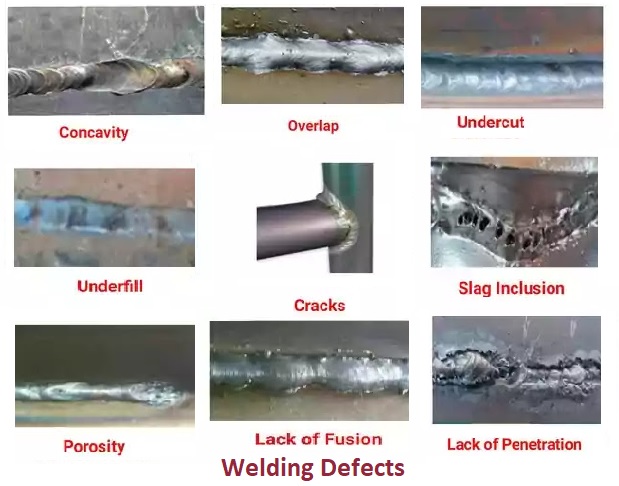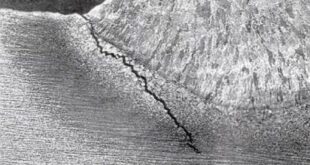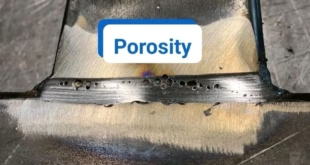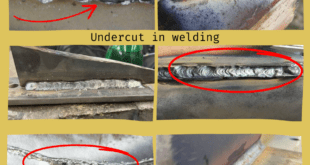Weld Defect Acceptance Criteria ASME B31.1 Power Piping
Introduction
Welcome to our in-depth guide on the Weld Defect Acceptance Criteria ASME B31.1 Power Piping. In any power piping system, the quality and integrity of welds are of paramount importance to ensure safe and efficient operation. The American Society of Mechanical Engineers (ASME) B31.1 code lays down the standards for power piping systems. This article will walk you through the crucial aspects of weld defect acceptance criteria, helping you understand the significance of adhering to these standards.

What is ASME B31.1 Power Piping?
ASME B31.1 is a widely recognized code developed by the American Society of Mechanical Engineers to establish guidelines for the design, construction, inspection, and maintenance of power piping systems. It covers various industries, including power plants, refineries, and chemical plants, where high-pressure fluid or steam is transported. This code ensures that power piping systems are engineered to be reliable, safe, and environmentally friendly.
Understanding Weld Defects
Weld defects are imperfections or irregularities in the weld joint that can compromise the structural integrity of the piping system. It is essential to identify and address these defects to prevent potential failures and accidents. Let’s explore some common types of weld defects:
Lack of Fusion
This defect occurs when there is inadequate bonding between the base metal and the filler metal. It can lead to weak joints and is often caused by improper welding techniques, such as insufficient heat or welding speed.
Porosity
Porosity refers to the presence of gas pockets or voids within the weld metal. These voids weaken the weld, making it susceptible to cracking and corrosion. Common causes include moisture, improper shielding gas, or contaminated welding materials.
Undercutting
Undercutting is the formation of grooves along the weld toe due to excessive heat or incorrect welding parameters. This defect can reduce the effective thickness of the joint, leading to stress concentration points.
Inclusions
Inclusions are foreign materials, such as slag or contaminants, trapped within the weld. They can weaken the joint and hinder the flow of fluids, impacting the overall performance of the piping system.
Cracks
Cracks are severe defects that can occur during or after welding. They may result from high welding stresses, inadequate preheating, or rapid cooling. Cracks can propagate through the material, leading to catastrophic failures.
Weld Defect Acceptance Criteria as per ASME B31.1
ASME B31.1 specifies acceptance criteria for various weld defects to ensure the safe operation of power piping systems. These criteria help engineers and inspectors determine whether a weld meets the necessary quality standards. Let’s delve into the key points of the acceptance criteria:
Acceptance Levels
LSI Keyword: Weld Acceptance Levels
ASME B31.1 defines three acceptance levels for welds, namely:
- A:The most stringent level with the least allowed imperfections. Typically used in critical applications.
- B: Less restrictive than Level A, but still suitable for most industrial applications.
- C: The most lenient level with the highest allowed imperfections. Commonly used for non-pressure-containing welds.
Non-Destructive Testing (NDT)
ASME B31.1 mandates NDT methods, such as radiography, ultrasonic testing, and magnetic particle inspection, to detect and assess internal and surface defects. NDT helps identify hidden flaws and ensure the integrity of the weld.
Repair and Rejection Criteria
If a weld does not meet the acceptance criteria, ASME B31.1 provides guidelines for repair or rejection. Depending on the severity of the defect, repairs may be permitted under certain conditions. In other cases, rejection and re-welding are necessary.
Ensuring Compliance and Safety
Adhering to the Weld Defect Acceptance Criteria ASME B31.1 is crucial for maintaining the safety and reliability of power piping systems. Failing to comply with these standards can lead to costly repairs, downtime, or, worse, catastrophic incidents.
When installing or inspecting power piping, make sure to follow these best practices:
- Employ Qualified Welders: Only trained and certified welders should be involved in welding activities to minimize the risk of defects.
- Proper Welding Procedures: Adhere to the approved welding procedures and parameters outlined in the ASME B31.1 code.
- Regular Inspections: Conduct regular inspections using NDT methods to detect and address defects before they escalate.
- Quality Control: Implement stringent quality control measures throughout the welding process to ensure consistent and reliable welds.
- Operator Training: Properly train all personnel involved in welding operations to prevent common mistakes and defects.
FAQs
Can weld defects be repaired?
Yes, depending on the severity of the defect and following specific guidelines, some weld defects can be repaired.
Is Level C acceptance suitable for critical applications?
No, Level C acceptance is generally reserved for non-pressure-containing welds and not recommended for critical applications.
What NDT method is best for detecting internal defects?
Radiography is one of the most effective NDT methods for detecting internal weld defects.
Can undercutting be considered acceptable?
Undercutting is typically not acceptable as it weakens the joint and can lead to stress concentration.
How often should power piping systems be inspected?
Regular inspections should be conducted as per the schedule outlined in the ASME B31.1 code, which considers factors such as operating conditions and pipe material.
Are weld defects always visible?
No, some defects, such as porosity or inclusions, may not be visible to the naked eye and require NDT methods for detection.
Conclusion
Ensuring compliance with the Weld Defect Acceptance Criteria ASME B31.1 Power Piping is essential for maintaining safe and reliable power piping systems. Understanding common weld defects and acceptance standards will help engineers, inspectors, and welding professionals make informed decisions throughout the piping lifecycle. By prioritizing quality and safety, we can ensure that power piping systems perform optimally and minimize the risk of costly failures.
Remember, adhering to ASME B31.1 guidelines and conducting regular inspections with NDT methods will go a long way in securing the integrity of your power piping infrastructure.
 Welding of Welders All about Welding and Welders
Welding of Welders All about Welding and Welders



